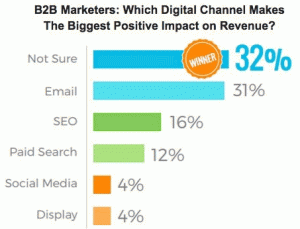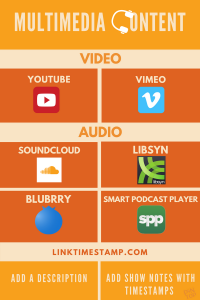Columnist Rebecca Lieb outlines the reasons why content marketing is more important to brands and marketers than ever before.

No matter what kind of marketer you are, content matters.
The reasons for this are manifold. Yes, there’s content marketing, which has long been called the “new black” in the marketing arsenal. Content marketing has risen to prominence for a slew of very, very good reasons. It’s customer-centric, rather than sell-centric. It’s about you rather than me, and it’s the marketing of attraction rather than interruption.
Content has also become popular due to the democratization of media. Everyone can do it (though doing it well is another story entirely). Blog? Podcast? Video? All you have to do is own a phone.
But there are other, more strategic reasons why content is paramount in marketing. Let’s examine why.
The eclipse of advertising
Digital advertising: banners, takeovers, video and other formats are plummeting in efficacy. Ad fraud is rampant, as are ad blockers. Marketers are challenged to reach consumers in new ways, and in ways that delight rather than anger them.
Enter content marketing, which informs, educates, entertains, provides utility and is there when you want it rather than when you don’t.
Traditional advertising has evolved into a commodity, swimming in an abundance of media buy options, thanks to the rise of digital, mobile and social technologies. Advertising was once the “boss” of marketing channels and tactics because it cost the most. Now, brands respond to new customer expectations with relevant content at every stage of their purchase decision journey.
Sophisticated marketers are exploring other marketing avenues that offer greater control, while advertising remains costly even as returns diminish.
Converged media
Content is what populates all media channels. It doesn’t just fill the need of “owned” media, such as your website or blog, but also is critical to earned media.
What would Facebook, Twitter, Snapchat and LinkedIn be without content? Vacant platforms visitors would have no need to ever visit.
Paid media (advertising) is also content-dependent. It’s called “creative” in that context, but make no mistake about it — ads are a form of content, too. And as paid, owned and earned media combine together and dance new dances to create new forms of marketing, such as native advertising (paid + owned media), a viable content strategy only becomes that much more important.
The culture of content
Content isn’t just for marketers. Content originates across the organization, primarily in public-facing functions such as sales, HR, customer service, product development and in the executive suite.
The culture of content is arising not just because brands are publishers, but because employees are publishers, too. Some will shrug this off this as noise rather than signal, but the proliferation of channels, platforms and devices is further enabling employees to speak on behalf of the brand.
Add to that requests from teams in social media, sales, thought leadership, real-time marketing, recruitment and customer service, and the demand has never been higher for continual content creation, refinement, repurposing and reformatting.
Content can help elevate numerous functions, from social selling to diverting calls from a call center to most cost-efficient digital channels. Smart organizations evangelize this message for cost savings, employee empowerment, thought leadership and other benefits.
Global content
International organizations are challenged to globalize their content initiatives. If content informs all aspects of marketing, then sharing, collaboration and efficiency are critical to scaling these efforts for efficiency, consistency and cost savings.
Attention must be paid to what types of content can be repurposed across channels and cultures, what content must be created and published locally, and what local successes can be amplified, repurposed and shared in other territories and by other lines of business.
Real-time marketing
All marketing initiatives are no longer locked and loaded in advance. Real-time marketing has become a critical challenge for many organizations to achieve relevance, provide customer service and offer relevance and direction in the face of breaking news and events. All of this brings with it new content challenges, but also great rewards: relevance, newsworthiness and other top-of-mind associations.
Yet preparing for and executing real-time marketing requires a finely honed content strategy, training, triage and close collaboration with legal and other departments outside of marketing.
Contextual campaigns
Beacons, sensors, the Internet of Things — content is not only everywhere, it will soon be everything: our appliances, clothing, location and vehicles. Marketers are already collaborating with IT and product groups to create content around how we live, what we’re doing and where we are when we do it.
Content is moving beyond marketing to be part of the way that we interface with the world around us.
What trends do you see contributing to the rise in prominence of content marketing? Share them with us on Facebook, Twitter or our LinkedIn Group.
Some opinions expressed in this article may be those of a guest author and not necessarily Marketing Land. Staff authors are listed here.
Marketing Land – Internet Marketing News, Strategies & Tips
(66)
Report Post







